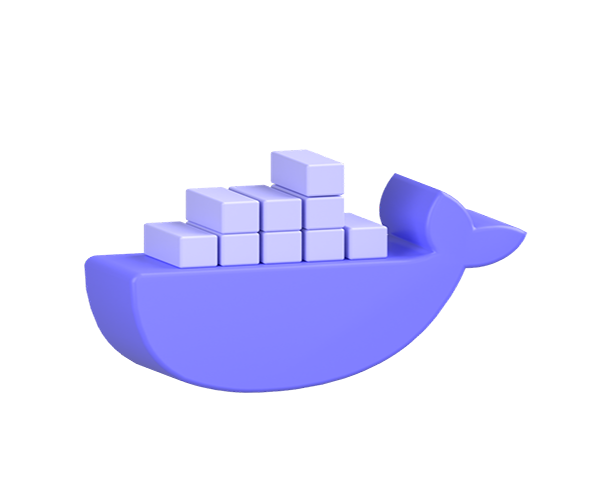Docker is an open platform for developing, shipping, and running applications. Docker lets you separate your applications from your infrastructure to deliver software quickly. With Docker, you can manage your infrastructure as you organize your applications. By taking advantage of Docker’s shipping, testing, and deploying code methodologies, you can significantly reduce the delay between writing and running code in production.
Docker has become a cornerstone technology that has really changed the game for us who want to build applications that can easily grow, move around, and work efficiently.
It works by using something called containers. Think of containers as small, lightweight boxes that hold everything needed to run an application, like the code, libraries, and the environment it needs. This helps create a consistent workspace for developers, and it makes it easier to manage resources while deploying applications whether in the cloud or on local servers.
Why is Docker Used?
Docker Containers are like little boxes that hold your code and everything it needs to run, making sure it behaves the same way no matter where you use it—whether on your laptop, a test environment, or on a live server. This makes it faster to develop software since you don’t have to deal with different versions of libraries causing issues.
With Docker, it’s easy to make your applications larger by adding more instances of them without a lot of hassle. Plus, it works well with tools like Kubernetes that help manage all those containers. Docker is especially good for building applications as a collection of smaller services, known as microservices, since it keeps them separate, portable, and makes it simple to deploy them individually.
How Does Docker Works?
Imagine you need to create a website using Node.js, a MongoDB database to store data, and an NGINX server to manage web traffic. Normally, setting this up would require a lot of steps. You would have to install different software, adjust settings for each part, and fix issues that come up when different programs don’t work well together.
But with Docker, you can simplify everything! Docker allows you to package all the pieces you need into a single unit called a container. This means you can run your website without worrying about installing things separately or dealing with conflicts. It’s like having a pre-made kit that includes everything you need to get your project up and running quickly and smoothly.
Step 1
Download Docker for your Operating system.Once installed, verify it by running
docker --versionStep 2
Create a Dockerfile. This a sample for Node.js Dockerfile
# Use the official Node.js image
FROM node:16
# Set the working directory
WORKDIR /app
# Copy application files
COPY package*.json ./
COPY . .
# Install dependencies
RUN npm install
# Expose the application port
EXPOSE 3000
# Command to start the application
CMD ["npm", "start"]Step 3
Build the Container . Run the following command to create a container image.
docker build -t my-node-app .Step 4
Run the Container. Start your application with the code below
docker run -p 3000:3000 my-node-appNow, your application is live on http:localhost:3000
How Docker Fits into Enterprise Architecture
For enterprise architects, Docker is a game-changer in how applications are designed, deployed, and managed.
- Docker makes it simple to move your application from one place to another. Everything your app needs is packed in a container, so it works the same way whether you’re developing it or running it in production.
- Docker containers are more efficient than traditional virtual machines. Unlike VMs that need their own operating system, Docker containers share one. This means you can fit many more containers on the same hardware—imagine running 10 apps instead of just 2!
- Docker pairs well with tools that help manage containers, like Kubernetes. This means architects can automate how containers are set up, adjust the number of containers based on user demand, and keep things running smoothly without much manual work.
- Docker allows architects to chop large applications into smaller pieces called microservices. Each piece can be packed into its own container, meaning they can be updated and scaled individually without disrupting the whole system.
In essence, Docker simplifies and optimizes the way businesses build and run their applications.
- CI/CD Pipelines: Docker helps make the process of building and launching software easier by using containers for testing and development. This ensures everything works the same way at each stage of the process.
- Multi-Cloud Strategies: Companies can use Docker because it allows their applications to run on any cloud service like AWS, Azure, or Google Cloud without changing anything. This flexibility saves time and resources.
- Legacy Application Modernization: Older software can be placed into containers using Docker, which helps in deploying, managing, and scaling them more easily without needing to completely rebuild the application.
Docker is constantly improving, making it easier to build more complex systems. With new features like Docker Desktop Extensions and better integration with Kubernetes, it continues to be an essential tool for engineers and developers. These updates allow users to manage their projects more effectively and streamline their workflows, ensuring that Docker stays relevant and useful for building and running applications.



